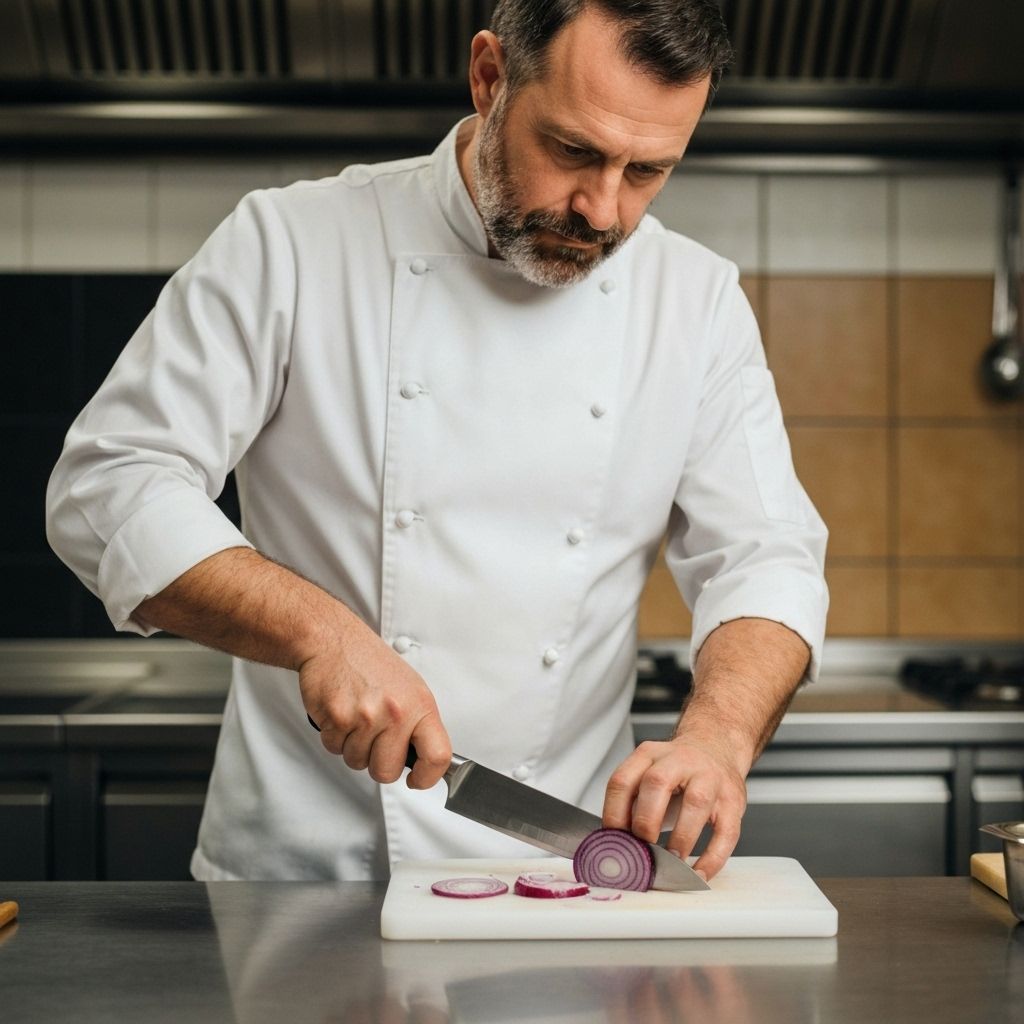Essential Knives for Beginner Cooks: Building Your Foundation
Start your culinary journey with these three essential knives that handle every basic cooking task with confidence.
- Answer the main question in one sentence.
- Give the best pick and why in one line.
- Link to the product or guide for next step.

Beginning cooks face overwhelming knife options. Marketing promises that elaborate sets are necessary, but reality proves simpler. Three well-chosen knives handle virtually every task a home cook encounters, making additional purchases unnecessary until skills and needs evolve.
The 8-inch chef's knife serves as your primary tool. This versatile blade handles chopping vegetables, slicing meat, mincing herbs, and crushing garlic. The length provides sufficient cutting surface for large items while remaining maneuverable for detailed work. Curved blade profiles enable the rocking motion that makes repetitive chopping efficient.
A 3-4 inch paring knife complements the chef's knife for small, precise tasks. Peeling apples, deveining shrimp, trimming fat, and creating garnishes all benefit from this smaller blade's control. The short length allows detailed work that would feel awkward with a larger knife.
Serrated bread knives solve problems other knives can't address. The saw-like edge cuts through crusty bread without crushing the interior, and proves equally valuable for slicing tomatoes, citrus fruits, and delicate cakes. A 9-10 inch blade provides sufficient length for large loaves while remaining easy to control.
Quality matters more than quantity. A single excellent chef's knife outperforms a drawer full of mediocre blades. Invest in the best knife your budget allows rather than buying complete sets. You can always add specialized knives later as your skills and interests develop.
Proper technique multiplies knife effectiveness. Learn the pinch grip—thumb and forefinger gripping the blade just ahead of the handle. This grip provides maximum control and reduces fatigue. Practice basic cuts like dice, julienne, and chiffonade to build confidence and efficiency.
// RELATED_ARTICLES

Laboratory Precision in the Kitchen: Advanced Weighing Techniques
Learn how precision measurement transforms cooking from art to science, enabling perfect reproducibility.

Fundamental Knife Skills: Precision Cuts for Professional Results
Master the essential cutting techniques that form the foundation of professional culinary practice.